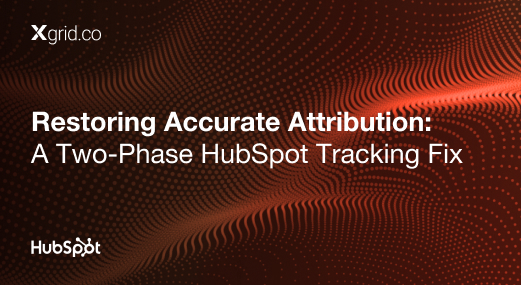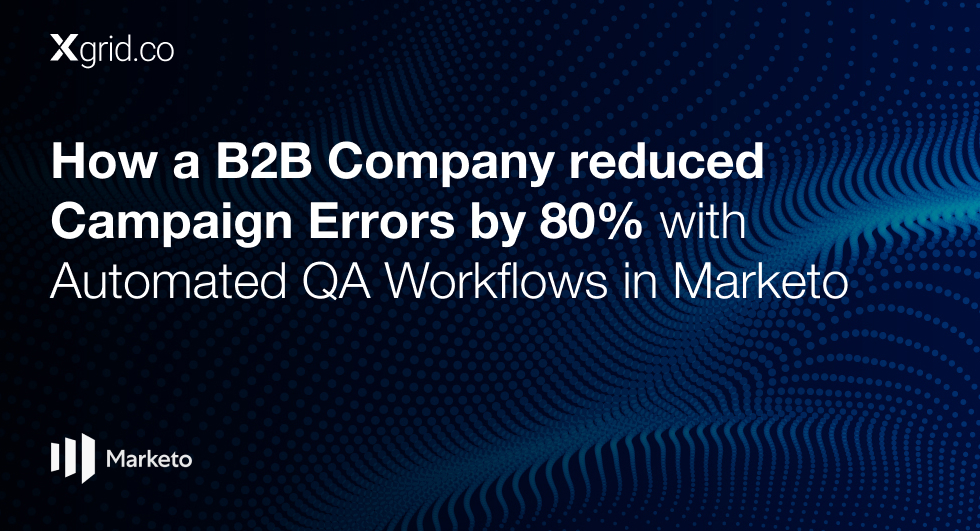From Overlap to Order: How Streamlined Workflow Timing in HubSpot Boosted Engagement and Reduced Fatigue by 25%
Background: Too Many Emails, Too Little Control
A B2B insurance organization managing multiple policy segments — including Auto, Home, Commercial, and Fire & Rescue — was unintentionally overwhelming its contacts. With no unified governance over workflow send times, contacts were often caught in multiple nurture streams and receiving back-to-back emails. The result? Unsubscribes, mixed signals, and declining engagement.
The Problem: Overlapping Workflows, Colliding Campaigns
Without proper workflow governance in HubSpot, the system was working against itself:
- Contacts were enrolled in multiple workflows (Auto + Home, for example)
- Emails overlapped, especially midweek — often hours apart
- There were no priority rules when a contact qualified for multiple nurtures
Suppression logic was missing, and send conflicts were hard to detect
The Solution: Centralized Workflow Governance and Segment-Specific Cadence
We designed a conflict-free engagement strategy that gave each policy line its own scheduled send time, added suppression logic to avoid collisions, and introduced monitoring dashboards to optimize timing over time.
What We Built (Step-by-Step)
Audited All Workflow Collision Points
- Mapped every segment-based HubSpot workflow and its send timing
- Identified where send windows overlapped — especially on Tuesdays and Wednesdays
Created priority rules to decide which campaign should “win” if a contact qualified for more than one
Introduced Segment-Specific Send Schedules
- Assigned fixed send times to each segment based on performance benchmarks:
- Commercial: Tues @ 12:30 PM
- Unsegmented: Tues @ 1:00 PM
- Auto: Wed @ 1:15 PM
- Home: Wed @ 2:00 PM
- F&R: Thurs @ 1:15 PM
- Commercial: Tues @ 12:30 PM
- Centralized send timing to ensure consistency and reduce email fatigue
Added Suppression Logic and Entry Checks
- Used if/then logic in workflows to check if a contact was active in another stream
- Introduced suppression lists that prevented any contact from receiving more than one campaign email within a 48-hour window
- Ensured contacts were removed or delayed if they didn’t meet engagement or timing criteria
Built a Monitoring & Optimization Framework
- Launched segment-level dashboards in HubSpot to track email performance by cadence
- Scheduled monthly governance reviews to tweak send times, frequency, and messaging length based on open, click, and unsubscribe trends
Results: Fewer Sends, More Engagement, Happier Contacts
- Email overlaps eliminated through clearly defined send times per policy segment
- Unsubscribe rate dropped 25%, directly tied to reduced message fatigue
- Contacts no longer received duplicate or conflicting nurture emails
- Sales teams could now follow up without competing with marketing sends.
Ready to achieve similar engagement gains? Our HubSpot Consulting Services guide teams in building smarter workflows and better automation.
Key Takeaways
- Even within a single platform like HubSpot, overlapping workflows can damage CX if left unmanaged
- Segment-specific send windows are crucial for maintaining clarity and cadence across campaigns
- Workflow governance isn’t optional — it’s the backbone of scalable, respectful engagement
Best Practices to Borrow
- Use suppression logic and contact state checks to protect against multi-enrollment collisions
- Assign fixed send times per audience segment, and document ownership clearly
- Audit workflows monthly for logic drift, outdated branches, or unmonitored send behavior




